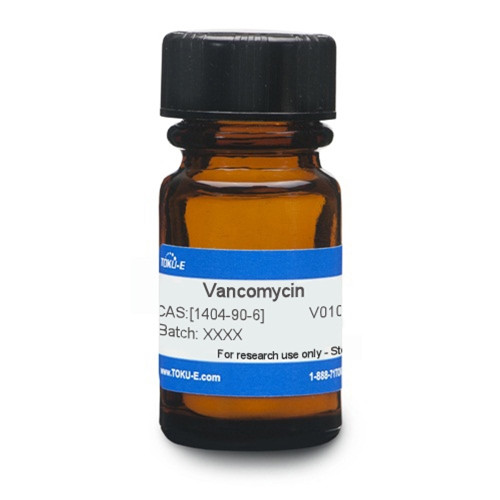Vancomycin is a glycopeptide antibiotic derived from Streptomyces orientalis that was discovered in 1953 from a soil sample found in Borneo. It is effective against gram-positive bacteria such as Staphylococcus aureus and is used in studies of nanoparticle transport and antibiotic resistance studies.
Vancomycin acts as a cell wall synthesis inhibitor in bacteria by preventing the transfer and addition of NAM/NAG-peptides that make up the peptidoglycan cell wall structure.
Vancomycin has low cell toxicity in plant cells and has been used in conjunction with Cefotaxime or Carbenicillin to stop the growth of Agrobacterium in plant cell culture and transformation.
We also offer:







